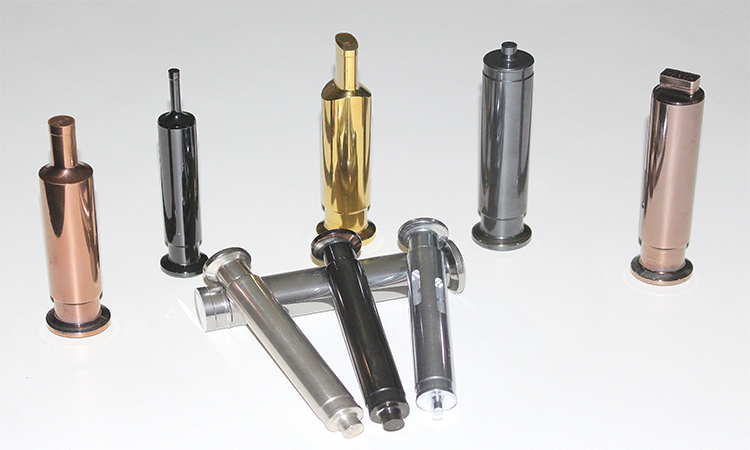The pharmaceutical industry, though fundamentally chemical in nature, is profoundly dependent on mechanical engineering. Every stage of drug manufacturing, from formulation to packaging, relies on precision-engineered tools and machines. Among these, tablet compression stands as one of the most critical processes, demanding high precision, cleanliness, and productivity.
In the early 2000s, the Indian pharmaceutical industry faced persistent challenges in tableting operations, primarily sticking of powder on punch tips, tool corrosion, and frequent downtime. The conventional solution of OHNS (Oil Hardened Non-Shrinking Steel) punches coated with hard chrome plating had several limitations: poor wear resistance, chrome’s toxic nature, and environmental non-compliance.
In 2007–08, Surface Modification Technologies Pvt. Ltd. (SMT) pioneered a breakthrough by introducing Physical Vapor Deposition (PVD) Chromium Nitride (CrN) coatings as an eco-friendly, biocompatible, and high-performance alternative to hard chrome plating for tablet punches. This innovation transformed the tooling practices of the Indian pharmaceutical industry.
Industry Background
During 2007–08, the pharmaceutical tablet compression industry in India was experiencing rapid mechanization and an increasing focus on high-speed tablet presses capable of producing millions of tablets per day. However, the mechanical components, primarily punches & dieswere not keeping pace with these demands.
Common challenges faced:
• Powder sticking and picking on punch tips, leading to frequent stoppages.
• Corrosion and wear caused by contact with chemical formulations.
• Hard chrome plating, the prevalent surface treatment—was becoming unsustainable due to:
• Environmental and worker-safety concerns.
• Uneven coating thickness and micro-crack formation.
• Poor adhesion on OHNS steel at low tempering temperatures (150–170°C).
• Deterioration of surface finish after few production runs.
Despite being a well-known coating globally, Chromium Nitride (CrN) was virtually unknown in Indian pharmaceutical tooling at that time. Furthermore, the industry’s standard metallurgy (OHNS) was incompatible with conventional PVD coating processes, which required substrate tempering above 400°C.
The SMT Breakthrough
Recognizing this challenge, a reputed Indian pharmaceutical manufacturer approached SMT in 2007 to explore a sustainable alternative. SMT’s R&D team, comprising surface engineers, metallurgists, & coating technologists, undertook the task to develop a PVD coating process for OHNS punches, without compromising their mechanical integrity.
Key technological developments:
• Process adaptation: SMT engineered a proprietary low-temperature PVD process suitable for OHNS steels tempered at 150–170°C.
• Coating selection: Chromium Nitride (CrN) was chosen for its:
High hardness (≈1800–2000 HV)
Low coefficient of friction (~0.4)
Excellent corrosion resistance
Biocompatibility with pharmaceutical formulations
• Optimized adhesion layer: A specialized interlayer ensured superior coating adhesion even at low substrate temperatures.
The first pilot batches of CrN-coated punches were delivered in 2008 for industrial trials.
Results and Impact
The results were immediate & remarkable:
Key customer outcomes:
• Reduction in sticking and picking issues by up to 90%
• Tool life increased 3–5 times, resulting in lower tooling costs.
• Improved surface finish of tablets and reduced rejection rates.
• Enhanced productivity through longer uninterrupted production cycles.
• Elimination of hazardous chrome plating waste and compliance with international environmental standards.
Transformation of the Industry
Following successful trials and consistent performance, SMT’s PVD CrN-coated punches were rapidly adopted across the Indian pharmaceutical sector. Within a few years, the industry saw a paradigm shift from conventional hard chrome plating to eco-friendly PVD coatings.
Today, nearly all major pharmaceutical tablet manufacturers in India rely on CrN and derivative coatings (e.g., TiN, TiAlN, CrAlN) developed by SMT for tablet tooling.
SMT’s innovations have since
expanded to:
• Capsule production tooling
• Pharmaceutical packaging components
• Other high-precision parts in compression and filling systems
Continuous Innovation and R&D
SMT continues to lead in coating technology for pharmaceutical tooling through:
• Customized coating solutions tailored to specific formulations (moisture-sensitive, abrasive, or sticky compositions).
• Collaborative R&D involving metallurgists and pharmacists to address emerging challenges.
• New-generation PVD coatings offering controlled friction, tailored hardness, and advanced tribo-chemical stability.
As of today, SMT’s coatings contribute to higher yield, lower maintenance costs, and enhanced safety compliance across the pharmaceutical manufacturing chain.
Conclusion
What began in 2007–08 as an experiment to address a sticking issue in tablet compression evolved into a technology revolution that redefined tooling standards in the Indian pharmaceutical industry.
By developing a viable PVD Chromium Nitride coating process for low-temperature OHNS steel, SMT not only provided a bio-compatible and eco-friendly alternative to hard chrome plating but also set new benchmarks in tool performance, life, and sustainability.
Over the years, the tablet compression tooling industry has continued to evolve, experimenting with new metallurgies and advanced surface treatments to overcome challenges emerging from high-speed manufacturing, complex formulations, and continuous production demands. Amidst this evolution, PVD coating technology has remained at the frontier, consistently adapting to new materials, processes, and performance requirements.
Today, SMT stands as a trusted innovation partner to the pharmaceutical industry. SMT’s ongoing innovations in PVD coatings ensure that the technology continues to lead the way as a reliable, sustainable, and high-performance solution for the modern pharmaceutical manufacturing ecosystem, ensuring cleaner production, higher productivity, and a sustainable future.
| Parameter | Hard Chrome Plating | PVD CrN Coating (SMT) |
| Surface Hardness | ~900–1000 HV | ~1600–1800 HV |
| Coefficient of Friction | 0.7–0.8 | 0.35–0.4 |
| Corrosion Resistance | Moderate | Excellent |
| Coating Thickness Uniformity | Poor | Highly Uniform |
| Production Uptime | 70–80% | >95% |
| Tool Life | 1x | 3–5x |
| Environmental Impact | Toxic, Hazardous | Eco-friendly, REACH compliant |

